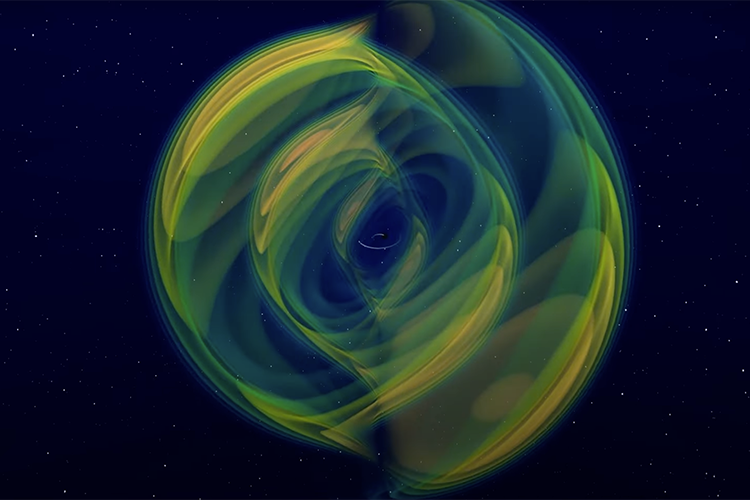New gravitational-wave analysis method promises breakthroughs in black hole research
16 July 2025

A still image from a numerical simulation of two black holes inspiraling and merging, emitting gravitational waves Credit: N. Fischer, H. Pfeiffer, A. Buonanno (Max Planck Institute for Gravitational Physics)
A new approach to analysing gravitational-wave data could transform the scientific understanding of black holes.
A collaborative team of researchers from the University College Dublin, University of Portsmouth, and University of Southampton have introduced a more accurate means to interpreting these ripples in spacetime caused by colossal cosmic events, such as black holes colliding.
(opens in a new window)Published in Nature Astronomy, the new approach works by incorporating multiple gravitational-wave models into a single algorithm, allowing these individual models to be used collectively to obtain the constraints of black holes.
Such constraints primarily come from observations of their behaviour and interactions with surrounding matter and energy, and help scientists to understand black hole characteristics like mass, spin and their impact on the universe.
By providing a more accurate analysis of gravitational waves, it is hoped this new method will become an essential tool for ground-based gravitational wave astronomy.
“Our method enables the incorporation of many state of the art gravitational wave models into one parameter estimation run. It then combines the results by prioritizing the more accurate models,” said co-author (opens in a new window)Dr Sarp Akcay, UCD School of Mathematics and Statistics.
Ever since the Nobel-prize winning detection of gravitational waves in 2015, study of these spacetime ripples has revolutionised the understanding of the universe by allowing researchers to see events that were otherwise hidden.
Prior to this, scientists could observe the night sky only through electromagnetic radiation such as visible light, infrared and radio waves.
“When a gravitational wave passes through Earth, we capture a brief signal. To figure out what caused it, we compare the observation against millions of possible theoretical gravitational-wave signals generated with different models,” said Dr Charlie Hoy, a Research Fellow at the University of Portsmouth’s (opens in a new window)Institute of Cosmology and Gravitation, and lead author for the study.
“The challenge is that not all models are equally accurate… Many gravitational-wave models have been developed over the years, but they all have some degree of approximation.
“With our approach, we are able to incorporate this uncertainty into gravitational-wave data analysis methods and obtain tighter constraints on the fundamental properties of black holes as a consequence.
"Gravitational-wave models are continually being developed and will likely improve in accuracy over the coming years. Our method is designed so that once these models become available, they can be incorporated into our algorithm.”
By: David Kearns, Digital Journalist / Media Officer, UCD University Relations
To contact the News & Content Team, email: newsdesk@ucd.ie






